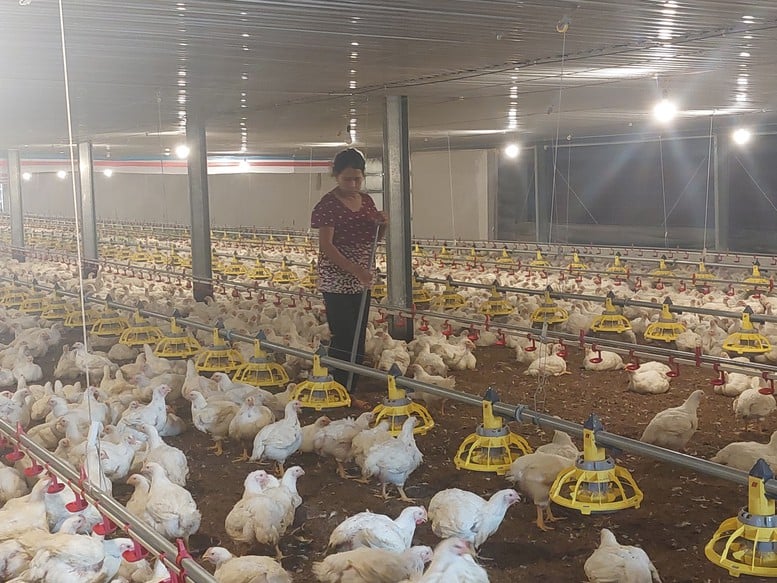
In the first quarter of 2025, poultry meat increased by 4.7% compared to the same period last year.
According to the report of the Department of Planning and Finance (Ministry of Agriculture and Environment), in the first quarter of 2025, many indicators of the livestock industry are showing growth. Specifically, the output of fresh meat of all kinds reached 2.15 million tons, an increase of 4.6% over the same period in 2024. The output of fresh pork reached nearly 1.36 million tons (up 5%), poultry meat reached more than 624,000 tons (up 4.7%), eggs reached 5.21 billion eggs (up 3.2%), fresh cow's milk reached more than 350,000 tons (up 5.6%).
However, buffalo and cattle farming tends to decrease due to low economic efficiency. The production value of the livestock industry increased by 4.48%, but was still 0.95% lower than the scenario proposed in Decision 681 of the Ministry of Agriculture and Environment.
In reality, the livestock industry is facing many challenges. Deputy Minister of Agriculture and Environment Phung Duc Tien said that the pig herd has only grown by more than 3%, while poultry (total herd of 574.5 million/year) has been continuously losing money due to price competition. In addition, the problem of antimicrobial resistance (AMR) in livestock is increasing, with research from the National Institute of Veterinary Research indicating that antibiotic abuse is the main cause. International initiatives such as the Fleming Fund and DANIDA are supporting Vietnam in raising awareness and monitoring AMR, but more long-term solutions are needed.
In the recent first quarter meeting of the Ministry of Agriculture and Environment, Deputy Minister Phung Duc Tien requested the Department of Animal Husbandry and Veterinary Medicine to be more aggressive in processing and trade promotion to increase added value. Currently, many Vietnamese livestock products are still exported raw, leading to low value. Investing in deep processing, such as processed chicken or packaged salted duck eggs, will help meet the strict requirements of the EU and Japanese markets, while reducing dependence on the Chinese market.
Disease control has created an important lever for livestock production. As of March 31, 2025, the country has not recorded any outbreaks of avian influenza, blue ear disease or foot-and-mouth disease. However, there are still 22 outbreaks of African swine fever in 9 provinces and cities and 8 outbreaks of lumpy skin disease in 3 provinces that have not passed 21 days, with 24,224 livestock and poultry culled. According to information from FAO, Vietnam has made progress in controlling African swine fever (ASF) with the approval of three ASF vaccines by 2025, including NAVET-ASFVAC, AVAC ASF LIVE and DACOVAC-ASF2.
Pursue specific goals
To achieve the target of increasing livestock production value by 5.7-5.98% in 2025, the Department of Animal Husbandry and Veterinary Medicine has developed growth scenarios for the remaining quarters: 6.02% increase in the second quarter, 5.95% increase in the third quarter, and 6.35% increase in the fourth quarter.
The US, China and Japan were the three largest export markets, with the US accounting for 20.2% (up 13.5%), China 17.3% (up 3.6%), and Japan 7.7% (up 26%). Europe is also a potential region, with an export value of US$2.61 billion (up 37.8%), showing great room to boost exports of livestock products such as processed chicken, honey and salted duck eggs.
Director of the Department of Animal Husbandry and Veterinary Medicine Duong Tat Thang emphasized the need to step up trade promotion and negotiate to expand markets in countries such as the US, Brazil, Argentina and Belarus. Europe, with an export growth rate of 37.8%, is a potential market for products such as processed chicken, honey, bird's nest and salted duck eggs. The Department has worked with agricultural counselors to promote cooperation and take advantage of trade agreements such as the EVFTA to reduce tariffs and increase competitiveness.
The Department of Animal Husbandry and Veterinary Medicine will increase the application of high technology in animal husbandry, from automatic feeding systems, waste treatment to disease control. Digital transformation, using mobile applications to record transactions and trace origins will help meet international standards on food safety and traceability, especially in demanding markets such as the EU.
Mr. Thang also said that to maintain livestock growth, the Department will continue to control diseases through vaccination, quarantine at border gates and ensure disease safety. Measures such as moving farms out of residential areas and disinfection need to be implemented synchronously.
Do Huong
Source: https://baochinhphu.vn/nganh-chan-nuoi-hanh-dong-de-giu-tang-truong-ben-vung-102250416182554912.htm



![[Photo] Prime Minister Pham Minh Chinh receives Mr. Tomas Heidar, Chief Justice of the International Tribunal for the Law of the Sea (ITLOS)](https://vphoto.vietnam.vn/thumb/1200x675/vietnam/resource/IMAGE/2025/5/6/58ba7a6773444e17bd987187397e4a1b)


![[Photo] Prime Minister Pham Minh Chinh chairs the regular Government meeting in April 2025](https://vphoto.vietnam.vn/thumb/1200x675/vietnam/resource/IMAGE/2025/5/6/48eb0c5318914cc49ff858e81c924e65)





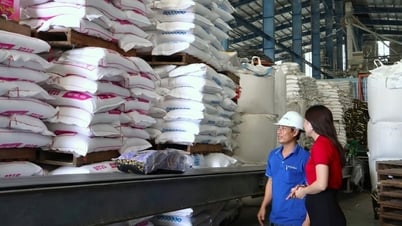






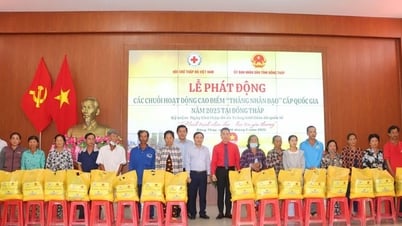


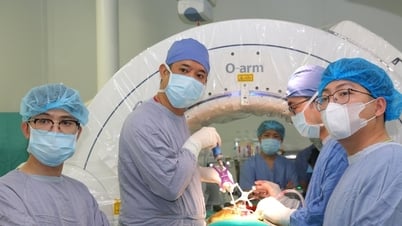










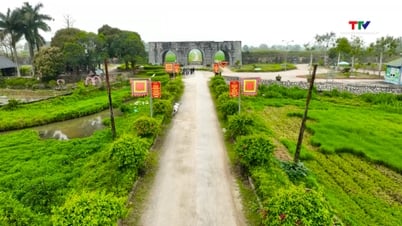









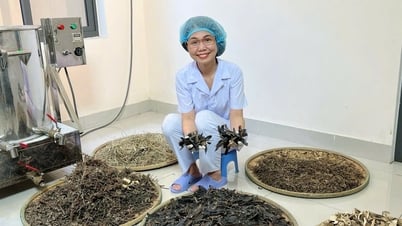








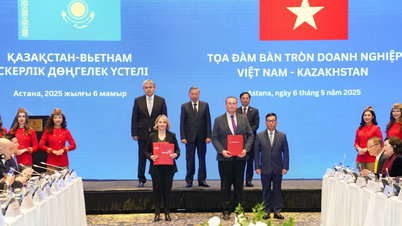
























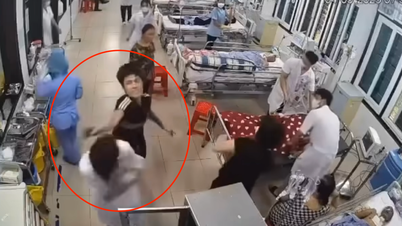








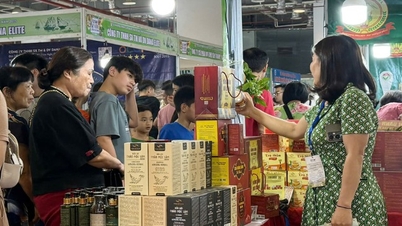

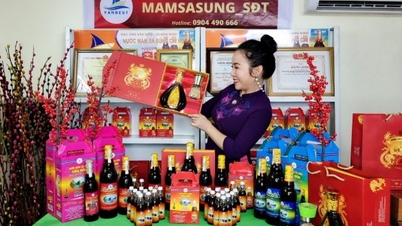




Comment (0)